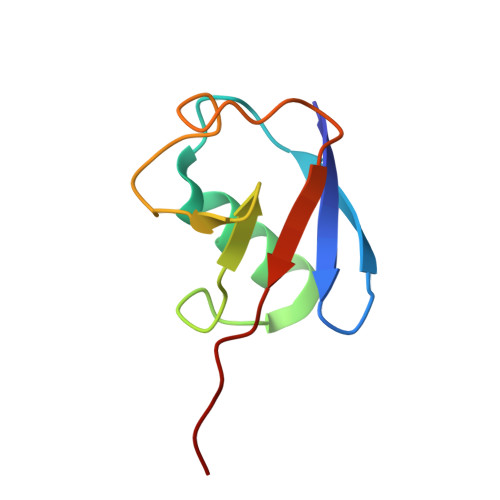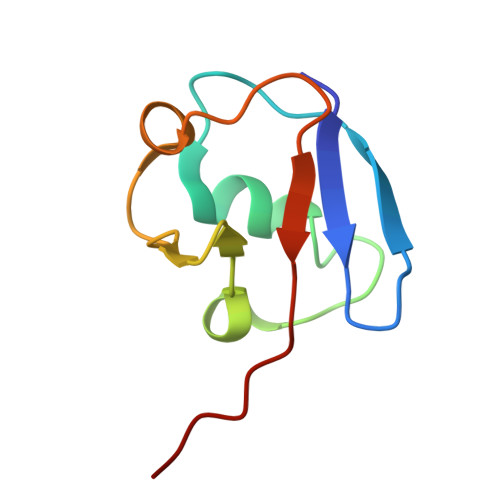Structural basis for E4 enzyme Ufd2-catalyzed K48/K29 branched ubiquitin chains.
Tong, Z., Wu, X., Cai, H., Wu, S., Zhang, T., Deng, Z., Xu, Z., Yuan, R., Ai, H., Liu, L., Pan, M.(2025) Nat Chem Biol
- PubMed: 40817136
- DOI: https://doi.org/10.1038/s41589-025-01985-2
- Primary Citation of Related Structures:
9KHS, 9KHT, 9M7O - PubMed Abstract:
E4 enzymes amplify and remodel ubiquitin chain signals beyond the conventional E1-E2-E3 cascade. The first identified E4 enzyme Ufd2 preferentially catalyzes K48/K29 branched ubiquitin chains, yet the structural mechanism remains unknown. Here, we combined chemical biology and cryo-electron microscopy to visualize stable intermediates in Ufd2 loading ubiquitin at K48 of proximal ubiquitin on K29-linked di- and triubiquitin. Our data reveal that the core region of Ufd2 functions as an unprecedented K29 diubiquitin binding domain, interacting extensively with proximal and distal ubiquitin, which orients the K48 site of proximal ubiquitin toward the active site of Ubc4, facilitating K48/K29 branched ubiquitin chain formation. We also identified a unique dimeric conformation where dimerized Ufd2 and Ubc4 stabilize each other's distal ubiquitin during branching on K29 triubiquitin. Our findings provide mechanistic insights into the assembly of K48/K29 branched ubiquitin chains by the E4 enzyme Ufd2 and highlight the spatial cooperation among multiple pairs of ubiquitin-related enzymes on longer ubiquitin chains.
- Institute of Translational Medicine, School of Pharmaceutical Sciences, School of Chemistry and Chemical Engineering, National Center for Translational Medicine (Shanghai), Shanghai Key Laboratory for Antibody-Drug Conjugates with Innovative Target, Shanghai Jiao Tong University, Shanghai, China.
Organizational Affiliation:




















